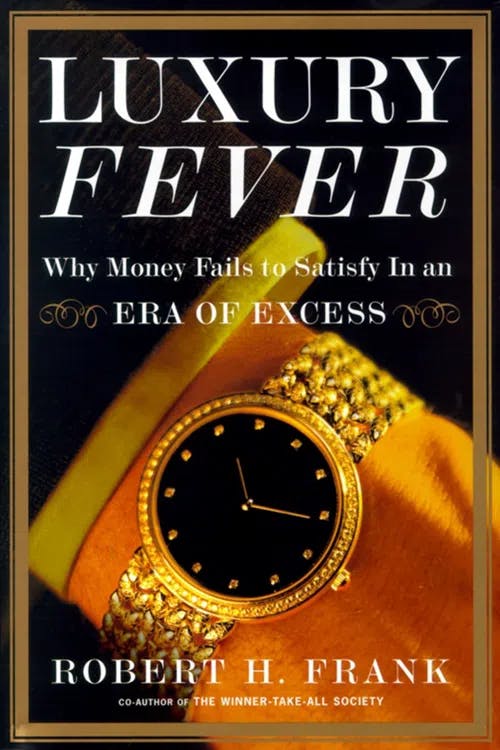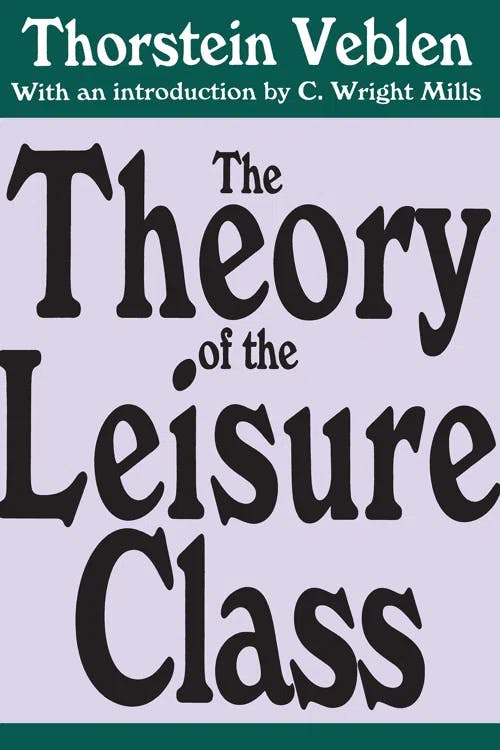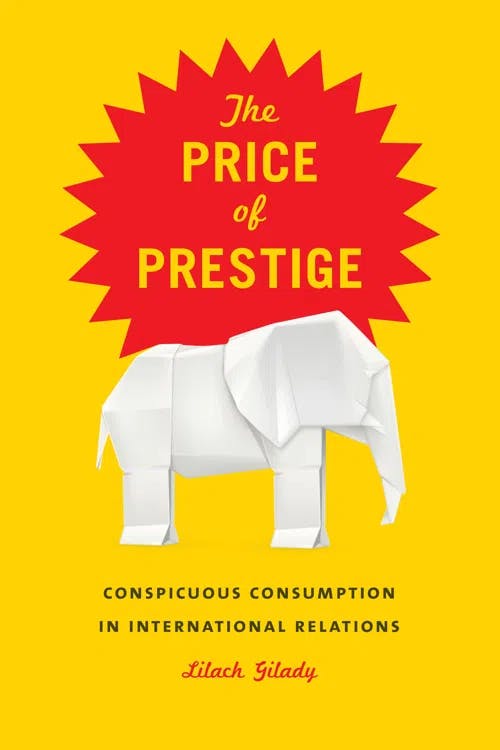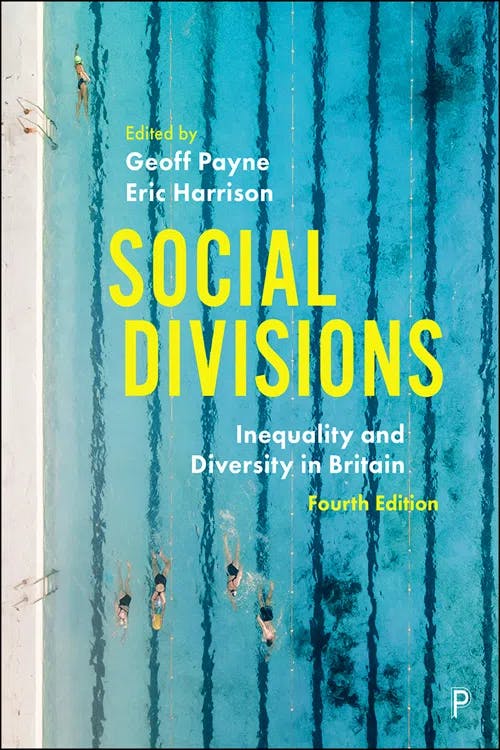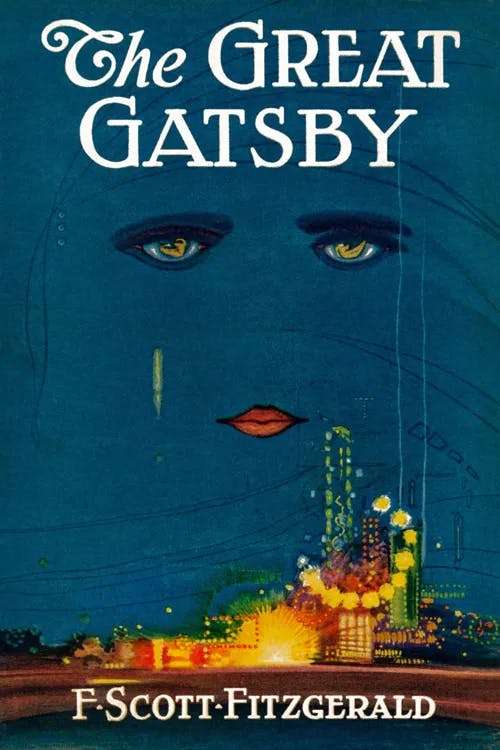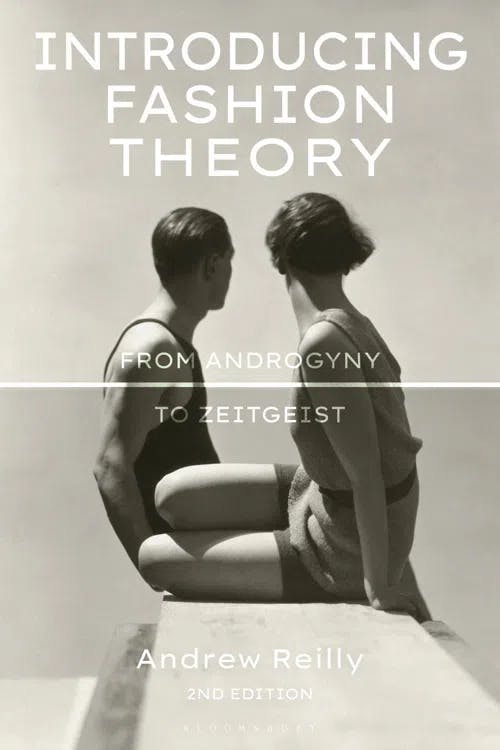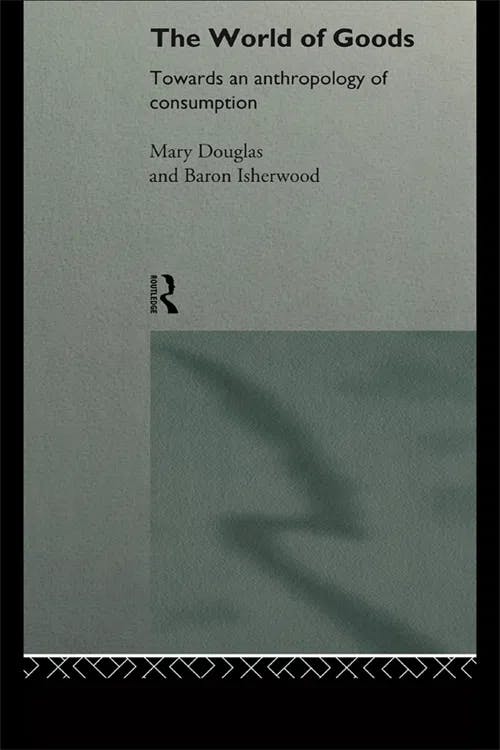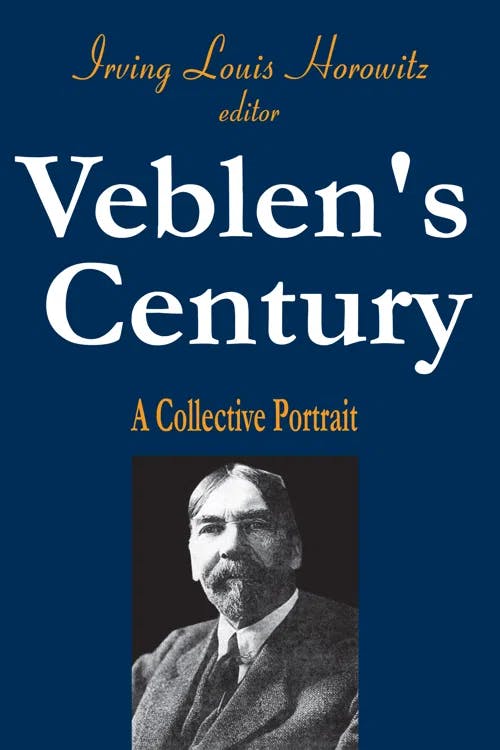What is Conspicuous Consumption?
PhD, English Literature (Lancaster University)
Date Published: 06.02.2024,
Last Updated: 06.02.2024
Share this article
Definition and origins
The term “conspicuous consumption,” coined by Thorstein Veblen in The Theory of the Leisure Class (1899), describes the act of ostentatiously displaying wealth in order to enhance one's social status and reputation within society. For example, a person may purchase a luxury item (such as a designer handbag) to show that they are affluent, rather than for its utility. Veblen argues this is primarily done by the “leisure class,” a group of wealthy individuals who partake in non-productive activities.
Veblen was in awe at the lavish expenditure of wealthy individuals in the US during the period from 1890 to the start of World War I, also known as America’s Gilded Age. As Robert H. Frank writes,
Among the most visible players of that era were the high-living descendants of railroad tycoon Commodore Cornelius Vanderbilt. By 1900, the clan had constructed eight lavish mansions between 51st and 59th Streets in Manhattan—including One 57th Street, whose 137 rooms made it the largest house ever built in an American city. (2001)
Robert H. Frank
Among the most visible players of that era were the high-living descendants of railroad tycoon Commodore Cornelius Vanderbilt. By 1900, the clan had constructed eight lavish mansions between 51st and 59th Streets in Manhattan—including One 57th Street, whose 137 rooms made it the largest house ever built in an American city. (2001)
Veblen noticed that these groups were displaying their costly goods and extravagant lifestyles as a way of communicating their high status.
While Veblen identifies that sometimes the accumulation of possessions and wealth is for physical comfort or necessity, he writes that
so far as regards those members and classes of the community who are chiefly concerned in the accumulation of wealth, the incentive of subsistence or of physical comfort never plays a considerable part. (1899, [2017])
Thorstein Veblen
so far as regards those members and classes of the community who are chiefly concerned in the accumulation of wealth, the incentive of subsistence or of physical comfort never plays a considerable part. (1899, [2017])
It is worth noting that while Veblen focuses heavily on the leisure class, he does recognize that conspicuous consumption occurs at all socioeconomic levels:
No class of society, not even the most abjectly poor, forgoes all customary conspicuous consumption. [...] Very much of squalor and discomfort will be endured before the last trinket or the last pretense of pecuniary decency is put away. (1899, [2017])
This guide will explore Veblen’s seminal text, identifying how the leisure class (and with it, conspicuous consumption) evolved from older civilizations, and providing examples of how the consumption patterns of the wealthy are geared towards advancing their social status and respect within society.
The evolution of the leisure class
Veblen argues that we find the inception of the leisure class in older civilizations, such as feudal Europe and feudal Japan, where we see a movement from a “savage” period characterized by cooperation, to a “barbaric” period which is marked by violence and competition. Veblen sees this competitive and predatory behavior in modern industrial societies, ultimately leading to a perceived need to conspicuously consume. There are three main ways in which people from different social classes (primarily the leisure class), from savage society to modern culture, attempt to mark themselves as of a superior status: abstention from work, property ownership, and pecuniary emulation.
Abstention from work
Prior to the conspicuous consumption of goods, status was marked in alternative ways. In the higher stages of what Veblen describes as “barbarian” culture, classes were distinguished through their occupations or lack of occupation. Veblen writes that
The upper classes are by custom exempt or excluded from industrial occupations, and are reserved for certain employments to which a degree of honor attaches. Chief among the honorable employments in any feudal community is warfare; and priestly service is commonly second to warfare. (1899, [2017])
Veblen gives the example of the Icelandic community in the Saga Age (c. 930–1030) in which manual labor was associated with the inferior classes of slaves, other dependents, and women. Conversely, men from the upper class were barred from all industrial occupations and only permitted to be employed in “government, warfare, religious observations, and sports” (1899, [2017]).
We can see this abstention from manual labor in our modern age in something which Veblen refers to as “conspicuous leisure.” Conspicuous leisure is a way that the leisure class develops a framework of respectability through not partaking in menial work and engaging in non-productive leisure activities. For example, a member of the upper classes may choose to go traveling around the world and stay at luxury resorts, displaying that they have the financial capability to spend money without having to sell their labor.
Property ownership
The cultural evolution of the leisure class, Veblen argues, also coincides with the beginning of property ownership. The beginning of ownership in lower barbarian stages of culture begins with the ownership and enslavement of women, often through the seizure of female captives as “prizes” during wartime:
The practice of seizing women from the enemy as trophies, gave rise to a form of ownership-marriage, resulting in a household with a male head. This was followed by an extension of slavery to other captives and inferiors, besides women, and by an extension of ownership-marriage to other women than those seized from the enemy. (Veblen, 1899, [2017])
Veblen argues that marriage during this period was a form of coercion and ownership:
From the ownership of women the concept of ownership extends itself to include the products of their industry, and so there arises the ownership of things as well as of persons. In this way a consistent system of property in goods is gradually installed. (1899, [2017])
This mindset, Veblen argues, would become applicable to all forms of consumption in which commodities were only valuable insofar as they could display their owner’s success, respectability, and taste. Veblen goes on to state that,
With the growth of settled industry, therefore, the possession of wealth gains in relative importance and effectiveness as a customary basis of repute and esteem. Not that esteem ceases to be awarded on the basis of other, more direct evidence of prowess; not that successful predatory aggression or warlike exploit ceases to call out the approval and admiration of the crowd, or to stir the envy of the less successful competitors; but the opportunities for gaining distinction by means of this direct manifestation of superior force grow less available both in scope and frequency. (1899, [2017])
Thorstein Veblen
With the growth of settled industry, therefore, the possession of wealth gains in relative importance and effectiveness as a customary basis of repute and esteem. Not that esteem ceases to be awarded on the basis of other, more direct evidence of prowess; not that successful predatory aggression or warlike exploit ceases to call out the approval and admiration of the crowd, or to stir the envy of the less successful competitors; but the opportunities for gaining distinction by means of this direct manifestation of superior force grow less available both in scope and frequency. (1899, [2017])
In other words, as opportunities to show predatory skills lessened with our move to another stage of civilization, the primary way of showing social status became the accumulation of wealth.
Pecuniary emulation
With the emergence of property ownership, Veblen notes the rise of pecuniary emulation (i.e., the desire to outperform others economically):
The motive that lies at the root of ownership is emulation; and the same motive of emulation continues active in the further development of the institution to which it has given rise and in the development of all those features of the social structure which this institution of ownership touches. (Veblen, 1899, [2017])
Individuals purchase commodities, according to Veblen, to mimic the behavior of those in the wealthier classes; believing this emulation will improve their social standing.
In addition to pecuniary emulation, we also see the conflicting process of “invidious consumption,” whereby members of the upper class try to spend even more to discourage the lower classes from emulating them. As Lilach Gilady explains,
The emulators will try to adopt the consumption patterns of the upper classes even if they have to compromise some necessities in the process. The result is never-ending cycles of differentiation and emulation. The snob will consume luxury goods as a means of differentiation, which will automatically make them desirable for the Joneses despite, and sometimes because of, their questionable functional value. For those without sufficient means, pecuniary emulation can impose significant long-term costs. (2018)
Lilach Gilady
The emulators will try to adopt the consumption patterns of the upper classes even if they have to compromise some necessities in the process. The result is never-ending cycles of differentiation and emulation. The snob will consume luxury goods as a means of differentiation, which will automatically make them desirable for the Joneses despite, and sometimes because of, their questionable functional value. For those without sufficient means, pecuniary emulation can impose significant long-term costs. (2018)
This competitive desire, however, is motivated by rank and status rather than security and comfort..
One of the main issues with pecuniary emulation, as Gilady points out, is that it is a never-ending cycle. As John Kenneth Galbraith states,
One man’s consumption becomes his neighbor’s wish. This already means that the process by which wants are satisfied is also the process by which wants are created. The more wants that are satisfied, the more new ones are born. (The Affluent Society, 1958, excerpted in The Essential Galbraith, 2001)
John Kenneth Galbraith
One man’s consumption becomes his neighbor’s wish. This already means that the process by which wants are satisfied is also the process by which wants are created. The more wants that are satisfied, the more new ones are born. (The Affluent Society, 1958, excerpted in The Essential Galbraith, 2001)
Moreover, those with lower incomes are encouraged to present a facade of wealth, resulting in them spending beyond their means and potentially accruing debt. As Frank argues,
It is not just the rich who have gone on a spending spree. Middle- and lower-income earners have been spending more as well. The prime mover in this change may have been the increased spending of the superrich, but their higher spending level has set a new standard for the near-rich to emulate, and so on down the income ladder. (2001)
This does not solely happen on the level of the individual consumer. As Gilady points out, it can factor into how countries emulate others to improve their international social standing:
[...] a state’s motivation for embarking on a costly policy is sometimes akin to an individual’s purchase of a luxury car or a designer gown—it establishes that country’s place in an international social hierarchy. (2018)
Gilady goes on to explain that international relations are “replete with examples of excess,” such as expensive (and unaffordable) weapons systems. These countries, much like the individual consumer, spend outside of their means to convey prestige.
The consumptive patterns of the leisure class
Commodities and commodity fetishism
Now that the leisure class has accumulated wealth, they need to find ways of flaunting it. The dawn of the internet and reality television has offered ample opportunities for the rich and famous to reveal their extravagant homes, giving viewers a voyeuristic taste of luxury and wealth. We can see this in shows such as Selling Sunset (2019–present), which offer a glimpse into a real estate market in Los Angeles which caters for the ultra-wealthy. This is also evident in the early 2024 TikTok trend of wealthy influencers showing off their expensive homes, in an unironic nod to the titular mansion in the movie Saltburn (2023).
There are also ways the leisure class can reveal their wealth when out in public and away from their costly manors. As Daniel R. Smith writes,
Leisure class consumption patterns evidence and underline the antagonism between different classes’ claims to power and esteem. Status goods such as the gentleman’s walking stick, the custom-made car, the tailor-made suit and handcrafted furniture are surrounded by pretensions (of beauty, refinement or superior quality) that seek to hide their being products of industrial activity. (“Elites,” in Social Divisions, 2020)
Edited by Geoff Payne and Eric Harrison
Leisure class consumption patterns evidence and underline the antagonism between different classes’ claims to power and esteem. Status goods such as the gentleman’s walking stick, the custom-made car, the tailor-made suit and handcrafted furniture are surrounded by pretensions (of beauty, refinement or superior quality) that seek to hide their being products of industrial activity. (“Elites,” in Social Divisions, 2020)
While these items have utility, purchasing these at a luxury grade begins to be a form of conspicuous consumption. For example, while a car has a functional purpose, the ultra-wealthy tend to buy expensive sports cars to display wealth and status.
We can also see this form of consumption occurring at lower income levels. A current trend, for example, is the emergence of fashionable, and often expensive, reusable water bottles (Conor Murray, “Why is TikTok Obsessed with Stanley Cups?”, 2024). While fashionable water bottles also have a practical purpose, the additional accessories and limited edition colors encourage buyers to purchase more than one. Moreover, the trending hashtag #emotionalsupportwaterbottle conveys value to this commodity outside of its use and its aesthetic. This is an example of what Karl Marx refers to as commodity fetishism, whereby goods have a perceived, mystical value beyond their function. Postmodern theorist Guy Debord makes a similar argument, stating that:
The real consumer thus becomes a consumer of illusion. The commodity is this illusion, which is in fact real, and the spectacle is its most general form. (1988, [2020])
Guy Debord
The real consumer thus becomes a consumer of illusion. The commodity is this illusion, which is in fact real, and the spectacle is its most general form. (1988, [2020])
(For more on this, see our study guide “What is Guy Debord’s Theory of the Spectacle?”)
Fashion
Set in New York during the Jazz Age, F. Scott Fitzgerald’s The Great Gatsby (1925) tells the story of Jay Gatsby, a member of the nouveau riche who ostentatiously displays his wealth in an attempt to win back his love Daisy and gain respect from the elite classes who are born into generational wealth. In this text, fashion is shown to be indicative of status. In one scene, Gatsby shows the narrator, Nick, and Daisy around his home, and displays his collection of clothes:
“I’ve got a man in England who buys me clothes. He sends over a selection of things
at the beginning of each season, spring and fall.”
He took out a pile of shirts and began throwing them, one by one, before us, shirts of sheer linen and thick silk and fine flannel, which lost their folds as they fell and covered the table in many-colored disarray. While we admired he brought more and the soft rich heap mounted higher—shirts with stripes and scrolls and plaids in coral and apple-green and lavender and faint orange, with monograms of Indian blue. (1925, [2023])
F. Scott Fitzgerald
“I’ve got a man in England who buys me clothes. He sends over a selection of things
at the beginning of each season, spring and fall.”
He took out a pile of shirts and began throwing them, one by one, before us, shirts of sheer linen and thick silk and fine flannel, which lost their folds as they fell and covered the table in many-colored disarray. While we admired he brought more and the soft rich heap mounted higher—shirts with stripes and scrolls and plaids in coral and apple-green and lavender and faint orange, with monograms of Indian blue. (1925, [2023])
This is but one example of the conspicuous consumption Gatsby engages in throughout the text. The abundance of tailored garments reveals how excessively he can spend, particularly as his collection is curated by a man in England who he also pays to ensure he is fashionable.
In Introducing Fashion Theory, for example, Andrew Reilly explains that fashion has been a way of demonstrating wealth for centuries:
[...] in ancient Rome where purple fabric was given status because of its relatively expensive and difficult procurement process. Divers had to explore dangerous waters to find the special mollusk whose ink was used as the dye base for the color purple. Finding enough mollusks was a costly process as many divers had to be employed. Wearing purple subsequently became synonymous with the upper class. (2020)
Andrew Reilly
[...] in ancient Rome where purple fabric was given status because of its relatively expensive and difficult procurement process. Divers had to explore dangerous waters to find the special mollusk whose ink was used as the dye base for the color purple. Finding enough mollusks was a costly process as many divers had to be employed. Wearing purple subsequently became synonymous with the upper class. (2020)
According to Veblen, there are three main ways in which the leisure class can reveal the luxuriousness of their garments:
- Expense: Items must be high quality and expensive. Counterfeits, even those which are near-identical, are therefore worthless.
- Impracticality: Impractical Clothes convey (particularly in the case of women at the time Veblen was writing) that the wearer is not suited for labor-intensive activities.
- Up to date: Fashion items must be on-trend and not outdated; the wearer should be able to purchase and disregard clothing “freely and uneconomically.” Veblen refers to this type of consumption as “conspicuous waste.”
(1899, [2017])
The advent of fast fashion has resulted in a rapid turnover of trends, encouraging consumers to purchase clothes at an excessive rate. These items quickly become unfashionable, however, and are then discarded in landfills. This has had a troubling impact on our climate (see Nikolay Anguelov, The Dirty Side of the Garment Industry, 2015, and our study guide on climate change).
Vicarious consumption
The leisure class also partake in vicarious consumption, a practice which is closely related to (and a part of) conspicuous consumption. Vicarious consumption is where a person conveys their wealth, generosity, and ability to spend frivolously on others by giving extravagant gifts, for example, or throwing lavish parties. In other words, the receiver of a gift or the guest at a lavish party vicariously consumes on behalf of the host or gift-giver. The host or gift-giver, in turn, derives vicarious satisfaction from this consumption — and benefits from an improved social standing. Veblen explains,
As wealth accumulates on his hands, his own unaided effort will not avail to sufficiently put his opulence in evidence by this method. The aid of friends and competitors is therefore brought in by resorting to the giving of valuable presents and expensive feasts and entertainments. [...] The competitor with whom the entertainer wishes to institute a comparison is, by this method, made to serve as a means to the end. He consumes vicariously for his host at the same time that he is a witness to the consumption of that excess of good things which his host is unable to dispose of singlehanded, and he is also made to witness his host’s facility in etiquette. (1899, [2017])
For example, in the aforementioned Saltburn (2023) the wealthy Catton family try to impress their guest, Oliver Quick (played by Barry Keoghan) who comes from a less privileged background. When Oliver arrives at Saltburn, he is shown expensive art and gifted lavish meals and clothes. For his birthday, an extravagant Midsummer Night’s Dream-themed party is thrown in his honor. All of these expenses are examples of vicarious consumption; the ways in which the Catton family display their wealth and spoil their guests.
Criticisms of Veblen’s theory
In The World of Goods, Mary Douglas and Baron Isherwood take issue with Veblen’s arguments regarding emulation:
Sociologists were all too ready to believe that emulation, envy, and striving to do better than the Joneses are the intentions which fuel consumption. But we have split up the possible social environments: some are individualist and competitive, in which case the Veblen perception is accurate; some are traditionalist and highly regulated, with spontaneous sumptuary codes. (1979, [2002])
Mary Douglas and Baron Isherwood
Sociologists were all too ready to believe that emulation, envy, and striving to do better than the Joneses are the intentions which fuel consumption. But we have split up the possible social environments: some are individualist and competitive, in which case the Veblen perception is accurate; some are traditionalist and highly regulated, with spontaneous sumptuary codes. (1979, [2002])
Douglas and Isherwood go on to explain how individuals consume to avoid exclusion within social groups. For example, some forms of consumption are forms of “rituals” which are “the normal marks of friendship,” such as inviting people to a wedding. Consumption of goods can be used more for social purposes than for private advancement or to create envy in one’s peers. Consumption events, such as weddings, funerals, or anniversary dinners, encourage integration and connection.
Critics have also addressed the limitations of Veblen’s methodology. In “The Strengths and Weaknesses of Veblen,” Douglas F. Dowd argues that
Veblenian “theory” is so unsystematic; it is, in an important sense, implicit rather than explicit. It is also riddled with gaps and marred by unsupported, at times unsupportable, generalizations. (In Veblen’s Century, 2017)
Irving Louis Horowitz
Veblenian “theory” is so unsystematic; it is, in an important sense, implicit rather than explicit. It is also riddled with gaps and marred by unsupported, at times unsupportable, generalizations. (In Veblen’s Century, 2017)
C. Wright Mills explains that Veblen’s generalizations include conflating the characteristics of the aristocracy and the bourgeoisie:
Veblen’s theory is not “The Theory of the Leisure Class.” It is a theory of a particular element of the upper classes in one period of the history of one nation. It is a criticism of the nouveau riche, so much in evidence in Veblen’s formative time, the America of the latter half of the nineteenth century, of the Vanderbilts, Goulds, and Harrunans, of Saratoga Springs and Newport, of the glitter and the gold. (Mills, The Power Elite, 1956, excerpted in Veblen’s Century, 2017)
By only dealing in broad strokes, Veblen does not account for other subsections of the wealthy classes. For example, Mills argues that Veblen recognized only the wealthy unproductive classes and the work population, ignoring the “power elite,” a network of individuals who have economic, military, and political power (Mills, 1956, [2017]).
Veblen’s critics do, however, tend to agree that his work is incredibly significant. Mills admits that
We must remember that we could not entertain, at least not so easily, such criticisms and speculations had Veblen not written. And that is his real and lasting value: he opens up our minds, he gets us “outside the whale,” he makes us see through the official sham. Above all, he teaches us to be aware of the crackpot basis of the realism of those practical Men of Affairs who would lead us to honorific destruction. (1956, [2017])
In his 1979 text Annals of an Abiding Liberal, Galbraith refers to Veblen’s work as “a wide-ranging and timeless comment” on the affluent classes:
It brilliantly and truthfully illuminates the effect of wealth on behavior. No one who has read this book ever again sees the consumption of goods in the same light. (Excerpted in The Essential Galbraith, 2001)
Consumption in the digital age
The rise of social media and influencer culture in the twenty-first century has provided new platforms for younger generations to showcase their commodities. The need to “keep up” with the extravagant lifestyles showcased on social media continues to be felt as people are encouraged to spend in order to take part in trends, and even microtrends. This, of course, all has a major impact on our environment as fast fashion and consumption reaches all-time highs.
As Douglas and Isherwood have previously indicated, however, we do not necessarily engage in consumptive habits to showcase wealth. For example, BookTok (a TikTok subcommunity of readers) has been accused of encouraging excessive spending and the hoarding of books. These readers may not be flaunting their wealth, however — instead, they may be engaging with these books in order to be accepted into a particular online community. Our consumption habits can indicate our status within a community, rather than our financial status. Excessive consumption within fandoms, for example, can demarcate the biggest fans and the most loyal hobbyists, affording individuals recognition and respect within certain communities.
It is worth noting, however, that while consumption (through advertising, sponsorship, and reviews) saturates social media, many have commented on this and encouraged a more mindful approach to spending. Many content creators on social media have taken part in a “No Buy Year” to encourage thriftiness, for example. While we are seeing an increase in some areas of conspicuous consumption (as outlined throughout this guide), we can also observe the emergence and popularization of conspicuous thrift — where influencers and content creators reveal their financial restraint. This more conscious reflection on spending may offer a potential antidote to the pressures of consumption in the modern age.
Further reading on Perlego
Hiding in the Light (2003) by Dick Hebdige
The Sociology of Consumption (1997) by Peter Corrigan
Thorstein Veblen and His Critics, 1891–1963 (2014) by Rick Tilman
What is conspicuous consumption?
What is vicarious consumption?
Who are the leisure class?
Bibliography
Anguelov, N. (2015) The Dirty Side of the Garment Industry: Fast Fashion and Its Negative Impact on Environment and Society. CRC Press. Available at: https://www.perlego.com/book/1520089/the-dirty-side-of-the-garment-industry-fast-fashion-and-its-negative-impact-on-environment-and-society-pdf
Cowles, C. (2024) “How’s Your No-Spend January Going?”, The Cut, January 25.
Debord, G. (2020) The Society of the Spectacle, translated by Donald Nicholson-Smith. Zone Books. Available at: https://www.perlego.com/book/1636424/the-society-of-the-spectacle-pdf
Douglas, M. and Isherwood, B. (2002) The World of Goods: Towards an Anthropology of Consumption. Routledge. Available at: https://www.perlego.com/book/1613461/the-world-of-goods
Dowd, D. F. (2017) “The Strengths and Weaknesses of Veblen,” excerpted in Irving Horowitz (ed.) Veblen’s Century: A Collective Portrait. Available at: https://www.perlego.com/book/1546480/veblens-century-a-collective-portrait-pdf
Fitzgerald, F. S. (2023) The Great Gatsby. Original Classics Editions. Available at: https://www.perlego.com/book/4247488/the-great-gatsby-pdf
Frank, R. H. (2001) Luxury Fever: Why Money Fails to Satisfy In An Era of Excess. Free Press. Available at: https://www.perlego.com/book/780883/luxury-fever-why-money-fails-to-satisfy-in-an-era-of-excess
Galbraith, J. K. (2001) “The Myth of Consumer Sovereignty,” The Affluent Society, excerpted in The Essential Galbraith. Mariner Books. Available at: https://www.perlego.com/book/2417860/the-essential-galbraith
Galbraith, J. K. (2001) “Who was Thorstein Veblen?”, Annals of an Abiding Liberal, excerpted in The Essential Galbraith. Mariner Books. Available at: https://www.perlego.com/book/2417860/the-essential-galbraith
Gilady, L. (2018) The Price of Prestige: Conspicuous Consumption in International Relations. University of Chicago Press. Available at: https://www.perlego.com/book/1850777/the-price-of-prestige-conspicuous-consumption-in-international-relations
Mills, C. W. (2017) “The Theory of the Leisure Class,” in The Power Elite, excerpted in Irving Horowitz (ed.) Veblen’s Century: A Collective Portrait. Available at: https://www.perlego.com/book/1546480/veblens-century-a-collective-portrait-pdf
Murray, C. (2024) “Why Is TikTok Obsessed With Stanley Cups? The Water Bottle Craze Racks Up Millions Of Views And Lots Of Revenue,” Forbes, January 3.
Reilly, A. (2020) Introducing Fashion Theory: From Androgyny to Zeitgeist. Bloomsbury Visual Arts. Available at: https://www.perlego.com/book/2035510/introducing-fashion-theory-from-androgyny-to-zeitgeist
Smith, D. R. (2020) “Elites,” in Payne, G. and Harrison, E. (eds.) Social Divisions: Inequality and Diversity in Britain. Policy Press. Available at: https://www.perlego.com/book/3533309/social-divisions-inequality-and-diversity-in-britain
Veblen, T. (2017) The Theory of the Leisure Class. Routledge. Available at: https://www.perlego.com/book/1578663/the-theory-of-the-leisure-class
Filmography
Saltburn (2023) Directed by Emerald Fennell. Available on Amazon Prime.
Selling Sunset (2019–present) Created by Adam DiVello. Available on Netflix.
PhD, English Literature (Lancaster University)
Sophie Raine has a PhD from Lancaster University. Her work focuses on penny dreadfuls and urban spaces. Her previous publications have been featured in VPFA (2019; 2022) and the Palgrave Handbook for Steam Age Gothic (2021) and her co-edited collection Penny Dreadfuls and the Gothic was released in 2023 with University of Wales Press.

